Related Research Articles

Swahili, also known by its local name Kiswahili, is a Bantu language originally spoken by the Swahili people, who are found primarily in Tanzania, Kenya and Mozambique. The number of current Swahili speakers, be they native or second-language speakers, is estimated to be over 200 million, with Tanzania known to have most of the native speakers.

Tanga Region is one of Tanzania's 31 administrative regions. The region covers an area of 26,667 km2 (10,296 sq mi). The region is comparable in size to the combined land area of the nation state of Burundi. The regional capital is the municipality of Tanga city. Located in northeast Tanzania, the region is bordered by Kenya and Kilimanjaro Region to the north; Manyara Region to the west; and Morogoro and Pwani Regions to the south. It has a coastline to the east with the Indian Ocean. According to the 2022 national census, the region had a population of 2,615,597.
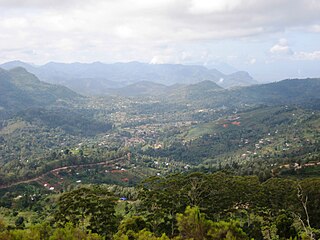
Lushoto is one of the eleven districts of Tanga Region in Tanzania. It is bordered to the northeast by Kenya, to the east by the Muheza District, to the northwest by the Kilimanjaro Region, west by Korogwe District and to the south by the Bumbuli District. The district's capital and largest town is Lushoto.

The Usambara Mountains of northeastern Tanzania in tropical East Africa, comprise the easternmost ranges of the Eastern Arc Mountains. The ranges of approximately 90 kilometres (56 mi) long and about half that wide, are situated in the Lushoto District of the Tanga Region. They were formed nearly two million years ago by faulting and uplifting, and are composed of Precambrian metamorphic rocks. They are split into two sub-ranges; the West Usambaras being higher than the East Usambaras, which are nearer the coast and receive more rainfall.
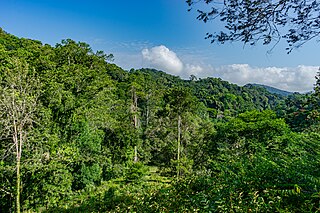
The Amani Forest Reserve, officially listed as Amani Nature Forest Reserve is a protected area located the Muheza and Korogwe Districts in the Tanga Region of Tanzania. The nature reserve was established in 1997 in order to preserve the unique flora and fauna of the East Usambara Mountains. The East and West Usambara Mountains are a biodiversity hotspot. The Amani Nature Reserve includes tropical cloud forest habitats.
The Zigua or in some sources Zigula are a Bantu ethnic and linguistic people hailing from far northern Pwani Region and western southern Tanga Region in Tanzania. In Tanga Region they are the majority in Handeni District, northern Kilindi District and also are a historically significant population south of the Pangani River in Pangani District. They speak the Zigula language. In 1993, the Zigua population was estimated to number 355,000 people, today they number 631,000 people.

The Shambaa people, also called the Sambaa, Shambala, Sambala or Sambara, are a Bantu ethnic group. Their ancestral home is on the Usambara Mountains of Lushoto District, Korogwe District and Bumbuli District. They are native to the valleys and eastern Usambara Mountains of Korogwe District, Korogwe Urban District and western Muheza District of northern Tanga Region of Tanzania. The word Shamba means "farm", and these people live in one of the most fertile Tanzanian region. Shambaai in Kisambaa means "where the banana's thrive". In 2001, the Shambaa population was estimated to number 664,000.
The Dhaiso, or Daiso are a Bantu ethnolinguistic group based at the foot of the Usambara Mountains in the Muheza District of Tanga Region in northeastern Tanzania. In 1999, the Dhaiso population was estimated to number 5,000, and the Dhaiso language is not being transmitted by adults to children. The Dhaiso are historically related to the Segeju, and are sometimes referred to as "Islamized Segeju". The Segeju are also found in the Kwale county of Kenya. Most of their tradition has been heavily influenced by their populous Digo neighbors. The Dhaiso and the Segeju are also historically linked to the Kamba people of kenya.
The Bondei People are a Bantu ethnic group based in Muheza District and Pangani District of eastern Tanga Region in Tanzania. The Bondei speak Kibondei, Bantu language and are culturally related to the Shambaa ethnic group.
Umba Valley is a geographic area in Tanzania and the world's only source of Umba sapphires.
Iramba, also known as Nilamba is a Bantu language of spoken by the Nilamba and Iambi people of the Iramba District in the Singida Region of Tanzania.
Wadawida are a subgroup of the Taita people of South Eastern Kenya in East Africa. These Bantu speaking people are in origin and language more related to the Taveta (Tuweta) people of Kenya, and the Pare who live at the Pare Mountains, Chagga who live on the slopes of Kilimanjaro and Sambaa people of Usambara Mountains in Tanzania.
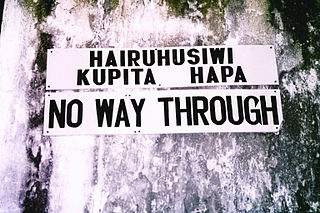
Tanzania is a multilingual country. There are many languages spoken in the country, none of which is spoken natively by a majority or a large plurality of the population. Swahili and English, the latter of which was inherited from colonial rule, are widely spoken as lingua francas. They serve as working languages in the country, with Swahili being the official national language. There are more speakers of Swahili than of English in Tanzania.
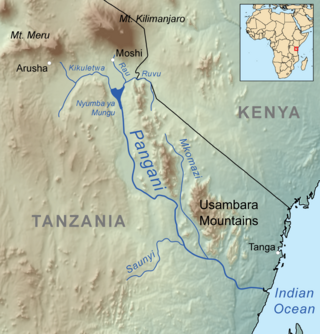
Kimweri ya Nyumbai or Shekulwavu Kimweri ya Nyumabi, also known as, , was the King of the Shambaa people of the Usambara Mountains in what is now Tanga Region of Tanzania between around 1815 and 1862. Under his rule the kingdom reached its greatest extent. However, disruptions caused by the introduction of firearms and the slave trade caused the kingdom to fall apart after his death.
Kimweri may refer to:

Lushoto is a town in the Usambara Mountains of Tanzania. It is the capital of Lushoto District, Tanga Region. The 2012 national census estimated the population of Lushoto ward at 28,190.
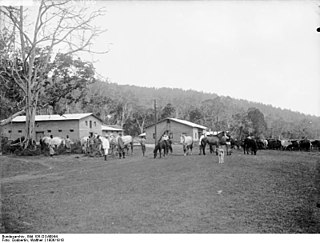
Shume is a town in Tanzania in the Usambara Mountains in Lushoto District of Tanga Region. It was formerly known as New Hornow and was the location of a sawmill during the country's colonial period. Around 1910, a cable railway was constructed to link the mill with the Usambara line to permit export to Germany.
The Kilindi dynasty(c. 1790s – 1862),, is a pre-colonial, Tanzanian royal family that has reigned over the Shambaa people of north-west Tanga Region for most of the 18th to 20th centuries In modern-day Lushoto District and Bumbuli District.
Vugha or Vuga is historic village located inside Bumbuli District of Tanga Region in Tanzania. The settlement was established as the capital of the Kilindi dynasty.
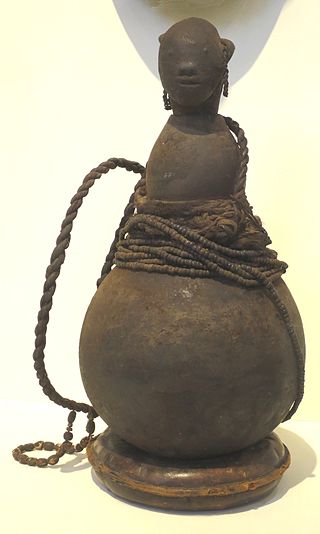
The Mbugu people, also known as the Va'maa, Ma'a are an ethnic Bantu and linguistic group hailing from western Usambara Mountains of Lushoto District in Tanga Region of Tanzania. Tanzania's Mbugu language is one of the few true hybrid languages, combining Bantu grammar with Cushitic lexicon. In actuality, the people speak two languages: one mixed and the other Pare, which is closely linked to the Bantu language. They are estimated to be around 60,000 Mbugu people left.
References
- ↑ Sambaa at Ethnologue (18th ed., 2015) (subscription required)
- ↑ Jouni Filip Maho, 2009. New Updated Guthrie List Online
- ↑ Riedel, Kristina (2009). The syntax of object marking in Sambaa: A comparative Bantu perspective. University of Leiden.